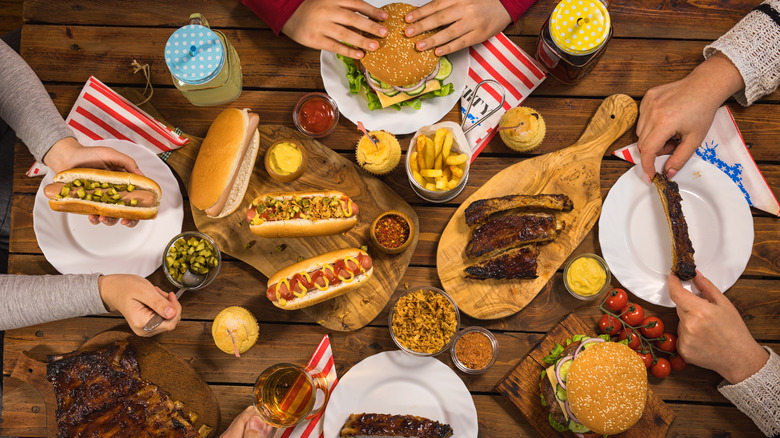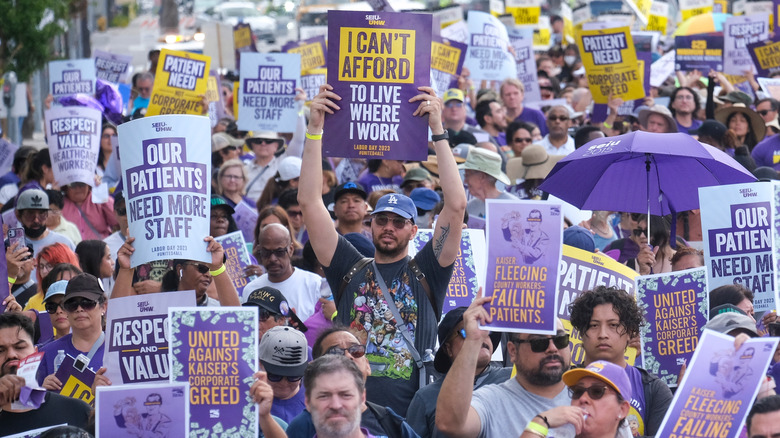The First Labor Day Barbecue Looked A Lot Different Than It Does Today
It's no secret that Labor Day marks the unofficial end of summer. Kids go back to school (if they haven't already), families take last-minute vacations, and friends celebrate the federal holiday with a costly backyard BBQ cookout. But the Labor Day festivities we're familiar with today have evolved so much from their origin.
Imagine for a moment you're living in New York City during the 19th century. America's factories are in their prime, and laborers — including children — work around the clock in unsafe conditions to earn a couple dollars each day. This setting was the catalyst for coordinating a parade that lauded the hard work of thousands of American laborers and raised awareness to improve workers' rights and working environments. Eventually, it became known as Labor Day.
On September 5, 1882, between 10,000 and 20,000 union workers proudly marched through the city. Many held banners repping their labor unions or signs displaying political statements. The parade ended at Elm Park, where workers and their families enjoyed a large outdoor picnic, live music, dancing, and food. A few years later, the Volunteer Firemen's Association in New York held a picnic at Brommer's Union Park. These public celebrations continued over the years in New York and beyond, and local municipalities began passing laws to officially commemorate the holiday. In 1894, President Grover Cleveland signed legislation officially making Labor Day a federal holiday.
How Labor Day has changed
Following the parades, participants and their families enjoyed a large barbecue or summer picnic – and there needed to be enough food to serve thousands of people. For example, following the Volunteer Firemen's Association's 1888 event, organizers roasted a 1,200-pound ox in a massive pit in the ground. In 1894, laborers in Chattanooga, Tennessee, held a Labor Day barbecue that included "twenty beeves, thirty sheep, ten shoats, and fifteen goats," according to food writer Robert F. Moss.
With the turn of the century and the rise of radical workers' rights groups, Labor Day festivities changed completely. Centrist organizers distanced themselves and focused on making the holiday about having a day off from work. Instead of protests and political action, Labor Day morphed into a relaxing day off with loved ones. Giant outdoor picnics in urban cities were replaced with backyard cookouts in suburban neighborhoods. Parades and marches were replaced with games and leisure.
Today, Labor Day cookouts are smaller and typically reserved for family members and close friends, if you choose to get together at all. Some Americans use the holiday as an opportunity to jet set out of town for a long weekend. Instead of serving roasted ox, most of us fire up the grill for hamburgers and hot dogs. And you can't forget classic comfort sides like creamy coleslaw, potato salad, chips, drinks, and maybe a fruit pie or cobbler. Fireworks are optional. Labor Day still commemorates American workers — and some groups do gather for marches and political actions — but it's much more subdued than in previous centuries.

